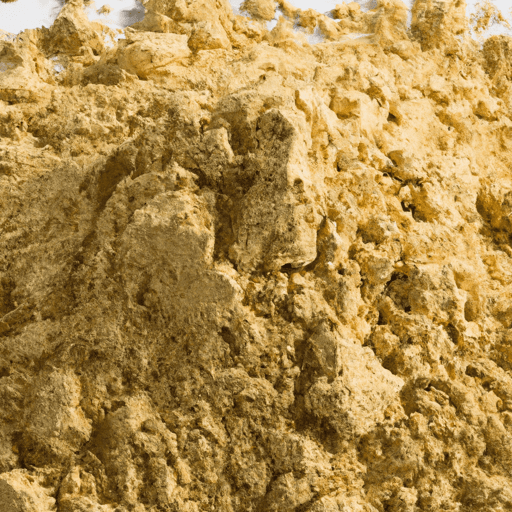Discover the Versatility and Nutritional Benefits of Garbanzo Bean Flour
Garbanzo bean flour, also known as chickpea flour, is a versatile and nutritious ingredient that has gained popularity in the culinary world. Derived from ground garbanzo beans, this gluten-free flour offers a unique flavor profile and a wide range of uses in cooking. Whether you’re seeking an alternative to wheat flour or simply looking to add a healthy twist to your recipes, garbanzo bean flour is worth exploring. In this article, we’ll dive into its taste, common culinary applications, nutritional value, and uncover some interesting history and facts.
Taste and Texture
Garbanzo bean flour possesses a distinct nutty and slightly sweet flavor that adds depth to both savory and sweet dishes. Its texture is fine and smooth, similar to that of regular wheat flour. When cooked, it has a crumbly yet slightly dense consistency, making it an exceptional choice for various recipes.
Culinary Uses
1. Gluten-Free Baking
For those with gluten sensitivities or celiac disease, garbanzo bean flour is an excellent alternative to traditional wheat flour. Its unique properties allow it to mimic the structure and texture of wheat flour when used in baking. It can be used as a stand-alone flour or in combination with other gluten-free flours to create delicious bread, muffins, cookies, and pancakes.
2. Thickening Agent
Garbanzo bean flour can act as a thickening agent in soups, stews, and sauces. Its high starch content helps to create a creamy and velvety texture without altering the flavor profile. Additionally, it provides a nutrient boost when used instead of traditional thickeners like cornstarch or wheat flour.
3. Savory Dishes
In many cultures, garbanzo bean flour is a staple in traditional savory dishes. In Indian cuisine, it is used to make delectable savory pancakes known as “besan chilla” or as a coating for fritters. In Mediterranean cooking, it forms the base for the famous dish “socca,” a thin, savory pancake that pairs beautifully with toppings or dips.
Nutritional Value
Garbanzo bean flour is not only delicious but also highly nutritious. It is a rich source of plant-based protein, dietary fiber, vitamins, and minerals. A 1-cup serving of garbanzo bean flour provides approximately 21 grams of protein, making it an excellent option for vegetarians and vegans. Additionally, it is packed with iron, magnesium, zinc, and B-vitamins, crucial for maintaining overall health.
Interesting History and Facts
- Chickpeas, the main ingredient of garbanzo bean flour, have been cultivated for over 7,000 years and are one of the oldest cultivated crops.
- Garbanzo bean flour has been a staple in Middle Eastern and Mediterranean cuisines for centuries.
- In some regions of India, garbanzo bean flour is commonly used as a natural facial mask for its skin-nourishing properties.
- Garbanzo bean flour has a long history of use in traditional Ayurvedic medicine for its digestive and healing properties.
Conclusion
From its unique flavor profile to its versatile applications in cooking, garbanzo bean flour is a remarkable ingredient to explore. Whether you’re looking to diversify your baking recipes or add a healthy twist to your savory dishes, this gluten-free flour offers endless possibilities. Embrace the rich nutritional benefits and explore the delicious world of garbanzo bean flour – your taste buds and your health will thank you!
Garbanzo Bean Flour
- Garbanzo bean flour, also known as chickpea flour, is made by grinding dried chickpeas into a fine powder.
- It has a rich history and is believed to have originated in the Mediterranean and Middle Eastern regions, where chickpeas have been cultivated for thousands of years.
- Garbanzo bean flour has a distinctive nutty flavor and is commonly used in various cuisines around the world.
- In Middle Eastern and Mediterranean cuisines, it is used to make popular dishes like falafel, socca, and panelle.
- In Indian cuisine, it is commonly utilized in traditional recipes like besan cheela (pancakes), pakoras (fritters), and dhokla (steamed savory cakes).
- Due to its gluten-free nature, garbanzo bean flour is also a popular alternative for individuals with gluten sensitivities or celiac disease.
- Nutritional benefits of garbanzo bean flour include being a good source of dietary fiber, protein, iron, and folate.
- It is rich in several vitamins and minerals, such as magnesium, potassium, and zinc.
- Garbanzo bean flour has a relatively low glycemic index, meaning it has a limited impact on blood sugar levels compared to other flours.
- Its unique properties make it useful as a thickener in soups, gravies, and sauces.
- Historically, garbanzo bean flour was used as a substitute for wheat flour during times of scarcity or in regions where wheat was less available.
- Garbanzo bean flour can be used as an egg replacer in vegan baking, as it helps bind ingredients together.
- It is also used in gluten-free baking to add structure and moisture to baked goods.
- Garbanzo bean flour can be toasted before use to enhance its flavor and aroma.
- It is a versatile ingredient that adds a distinct taste and texture to both savory and sweet recipes.




Use the share button below if you liked it.
It makes me smile, when I see it.